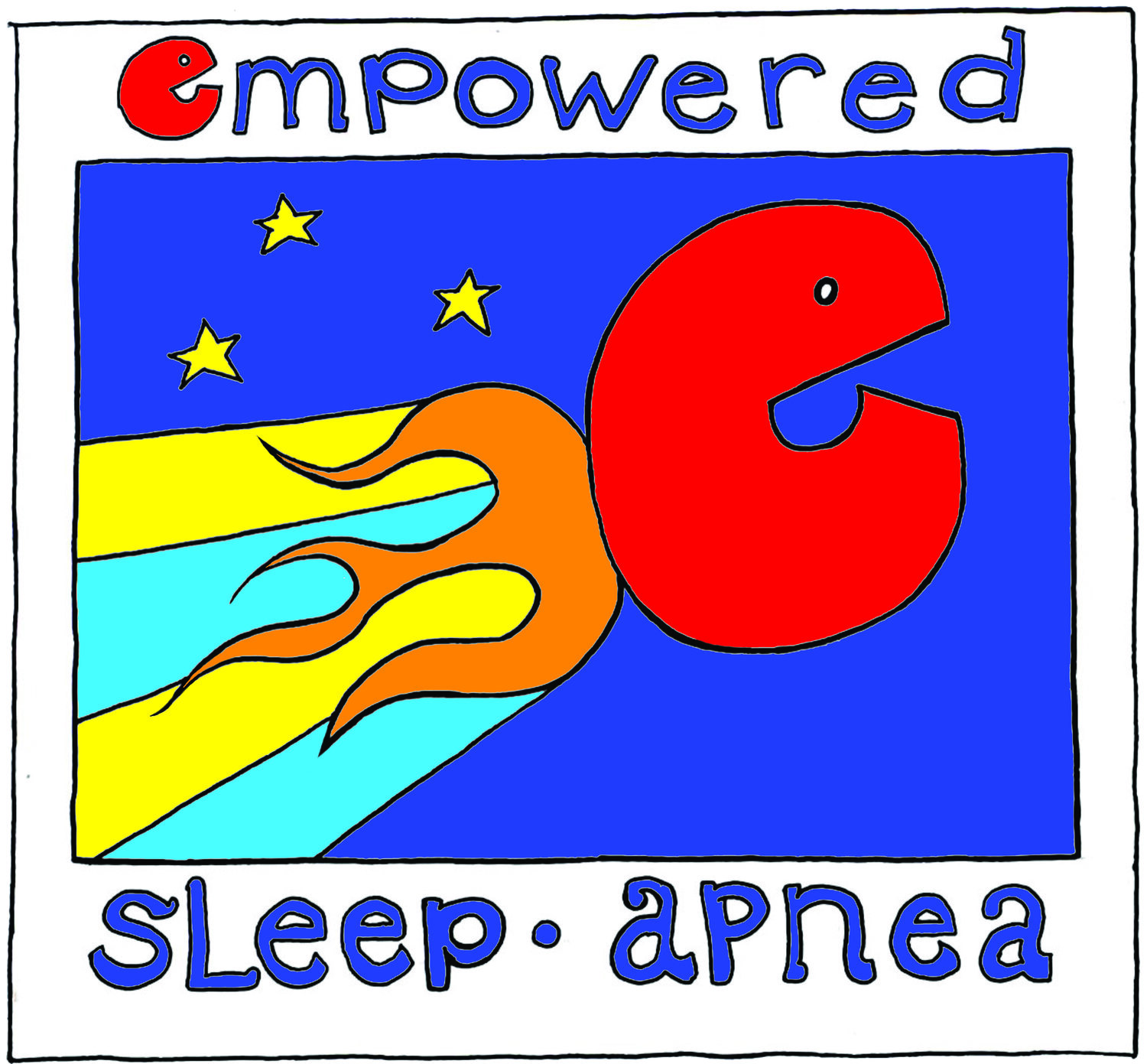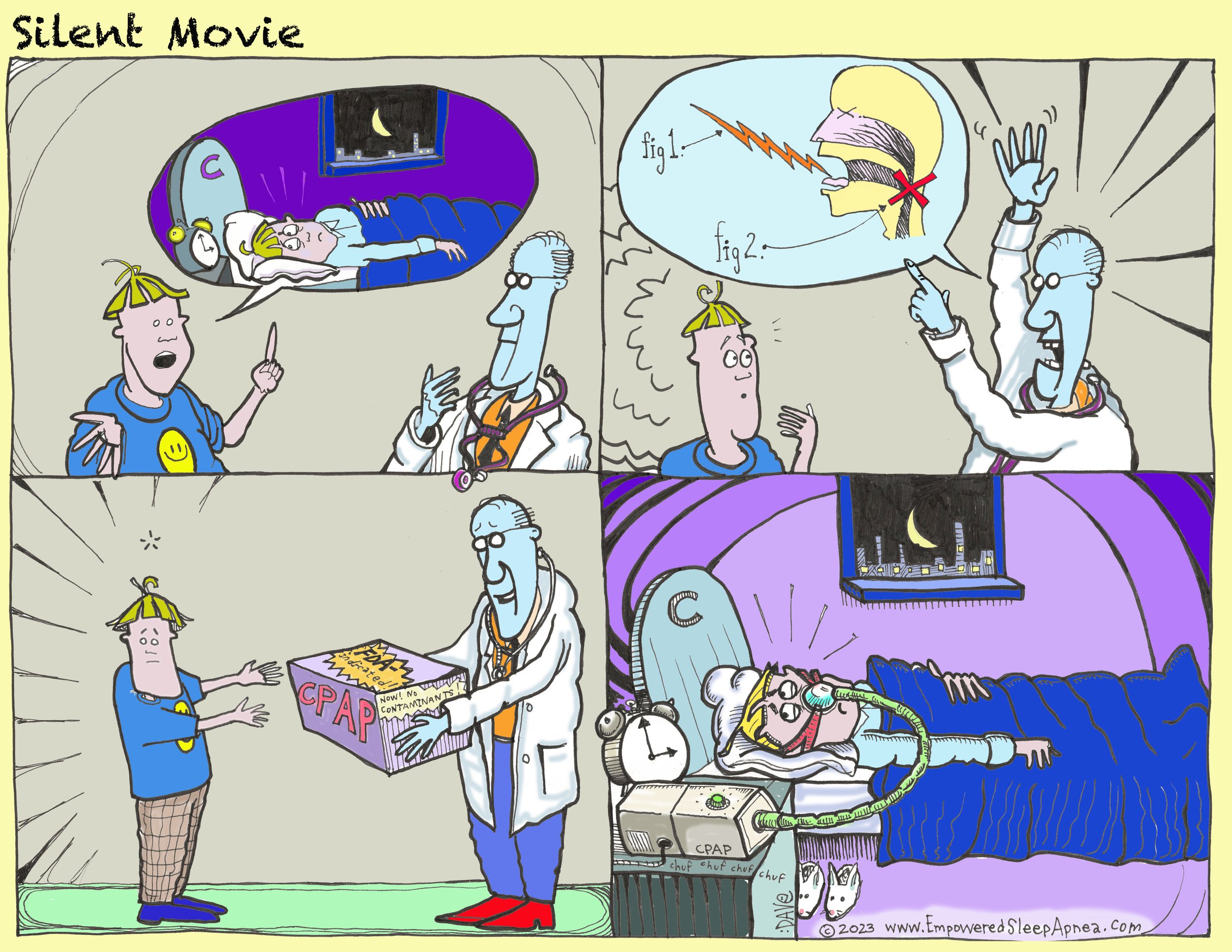Silent Movie: What We Don’t Hear is Hurting All of Us
OR: How Efficiency Erases Humanity
January 10, 2022
By David E McCarty MD, FAASM
~ ~ ~ ~ ~
The data behind undiagnosed Sleep Apnea creates an urgency that’s hard to ignore.
A recent estimate placed the prevalence of Sleep Apnea at over 40 million adults in the United States alone, with only about one in five yet diagnosed. Worldwide, the estimate is that the label Sleep Apnea could potentially be awarded to over a billion adults, if only the testing kits were available.
Hear that sound? That steady drip, drip, drip?
That’s the ugly sound of venture capitalists drooling.
Historically, one of the major obstacles to making the diagnosis of Sleep Apnea has been the complex technology it required. In-lab polysomnography is expensive, slow, and restrictive, requiring not just technical expertise, but also accreditation for the lab, and board-certification for the provider writing the report. Over the last five years, home sleep apnea testing (HSAT) has almost completely supplanted lab-based testing as the primary mode of diagnosis, taking fixed lab costs and expensive overnight technicians out of the picture, and bringing new and inventive ways to bring this resource to more and more patients in need.
First, let’s take a look at one way this technology is being rolled out, because, believe me: there will be fanfare. I’ll start with the fanfare first. To find out how I really feel about this, though, I urge you to read all the way to the end. That’s where I’ve hidden our new cartoon, anyway, like the prize in the bottom of the box of CrackerJacks.
The good stuff is always at the bottom.
~ ~ ~ ~ ~
Let’s start with this: the urgent demand for sleep medicine services has spawned a new iteration of medical care that you can access, just by going to your computer! Whaaa? Who knew that getting medical advice might be easier than a Tinder swipe, or ordering a candy bar from a vending machine? What could possibly go wrong?
Friends are telling friends: Trust TRUE BLUE…
Sensible people seek EMPOWERMENT!
Yup, through video-based encounters, some companies are offering to screen you for Sleep Apnea, and then drop ship your very own compact HSAT, a wearable Ring-Pop sized device that can give you data that’s been validated against in-lab polysomnography, automatically, and in less than an hour.
All you do is wear the device overnight and upload the data to the interwebs in the morning. It’s like having a whole sleep lab on your finger.
Imagine it.
(Cue fireworks)
No more bottleneck! HUZZAH!
All cheekiness aside, the importance of this little factoid is difficult to overstate, Life-Fans. This. Will. Change. Everything.
And, again: if it sounds like I’m wholesale promoting this approach, I beg you to read to the end. That’s where things start to get interesting.
For now, anyway: let’s get back to the fanfare…
~ ~ ~ ~ ~
Fact: The AASM recently estimated that for every board-certified sleep medicine specialist, there are 48,000 patients in need of specialty services. Implication: once the “bottleneck” of the Sleep Clinic is removed from the diagnostic process, the potential boon for patients is seemingly obvious!
CUE MORE FIREWORKS: Whaaa? Diagnostic availability, for all! Huzzah! Even if you’re in the middle of nowhere! Yowzah!!
I’ll go one step further…very soon, I predict that we’ll see wearable Sleep Apnea diagnostic capability in every dental office, every cardiology office, every pulmonology office, every primary care office, in our fair land.
As I said: this will change everything.
But.
Now we get to the good part, the one I promised earlier, the yummy bits towards the bottom of the box.
See, the party is early, Life-Fans. My concern is what happens next, later, after the fireworks have faded and the ribbon-cutting is forgotten.
What happens to these individuals, these persons, these moms, dads, working folks without insurance, college kids, active duty military members, school bus drivers, airplane pilots, your spouse, your parent, your child…YOU…once awarded with this label?
What then?
In the automated system of SOON, screening and diagnosis for Sleep Apnea will be worked into the process, efficiently, quickly, by medical extenders working from disease-based algorithms, with compensation surely following for clinics involved, billed legitimately through insurance, for services rendered.
The telehealth explosion will be doing its thing, doling out CPAP machines by mail order, or referring patients to a third-party dentist for a standard mandibular advancement device, all with the notion that efficiency is better.
Will it be?
I wonder. I see this trend through the clouded lens of battle. I spent my career walking arm-in-arm with thousands of folks that the algorithmic system left behind. I’ve cleaned up the mess that happens when folks are treated this way, after the money’s been collected, after they’ve lost their faith in a system that never seemed to listen to them, after they’ve given up.
Personally, I see the trend towards treatment-oriented profit and efficiency contributing to an increasing dehumanization of the process, turning the whole circus into an elaborate vending machine for one or two “accepted therapies.” Elegant plan, in its simplicity, but one which practically isn’t going to work for many.
Choosing treatments carries more baggage than choosing between the Zagnut and the Milky Way bar, you see? Healthcare, it turns out, was never meant to be a vending machine. Healthcare is supposed to provide guidance among choices, sometimes guidance away from things that aren’t needed. It’s complicated.
When the technology for automatic diagnostics hits its full-stride, I foresee the label of Sleep Apnea being handed out indiscriminately, en masse. The lower the bar for screening, the more cases will be discovered, right?
It’s basic epidemiology.
Increased discovery will inevitably be followed by an equally efficient (i.e.: indiscriminate) procurement (i.e.: sale) of treatments, allowing the whole financial apparatus to keep running.
Here's the simple question I have, one that keeps coming up, one which won’t go away: what will become of the tens of millions of individuals who receive their diagnosis and treatment this way? Will they understand it? Will they embrace the purported treatments offered, and engage with their problems in a way that leads to improvement? Will the treatments sold to them address the complaints which motivated them to seek care in the first place?
How much money will it cost, to resolve the issues most important to the patient, when all strategies seem curiously funneled into the same one or two solutions? How much time will it take for the patient to navigate the vast, fractured system of options, when the factions seem to be arguing with each other?
How will this group of patients speak of this experience, this interaction with Sleep Medcine, when all is said and done? Will they speak well of it?
Above all: will anyone retain the faith that providers in such a system are placing patients’ best interests ahead of financial gain?
These are worthy questions.
This is the Silent Movie that’s screening in homes all over the world today, the silent suffering of those who were provided with a One Size Fits All solution to a very complicated problem.
Truth is: the catastrophic complexity that’s captured within the moniker Sleep Apnea is vast, roiling, and difficult to talk about. As I’ve said in other forums, there are lots of moving parts, and, all told, the beast is truly a nightmare of Lovecraftian proportions.
The Lovecraftian Nightmare:
Most of us only see of a piece of it!
I call it a “Movie,” because I’ve seen this one a thousand times, and let me tell you, it always goes the same way. If a person doesn’t understand the diagnosis, if they can’t take it apart and be part of the solution, the natural reaction to obtrusive treatments shoved in one’s general direction is to push back.
It’s just human nature. It’s why kids cringe whenever somebody says “Eat your vegetables!”
I call it a “Silent Movie,” because folks trapped within it typically have no voice to ask the questions on their mind—hell, most of the time, they don’t even know who to ask!
Most don’t even know who’s listening.
So: while I can get behind systemic changes that make testing more available to more people, it’s past time we talk about the effects that such mass-labelling will have, particularly if it’s not accompanied by education that empowers individual patients to navigate an increasingly fragmented system.
In short, the price we’ll pay for circumnavigating the Sleep Specialist is that we’ll produce a generation of patients with a lasting core belief that their healthcare system is set up to extract money from their pockets, whilst they simultaneously reject legitimate therapies because they feel railroaded towards overbearing and expensive treatments, all possibly for the wrong reasons.
If you’ve got questions about WHY a treatment strategy is being offered to you, if the explanations offered don’t seem sensible, it’s possible you’re unknowingly starring in your own little Silent Movie vignette. It’s for YOU, dear reader, that the Empowered Sleep Apnea project was launched.
Thank you for reading all the way down to the bottom of the box, where the errant peanuts and sticky caramel debris reside. As I said before, there’s a prize down here. As usual, Life-Fans, all of this adulting is merely setting the stage for today’s cartoon…a little something I’m calling (you guessed it!) Silent Movie.
Happy Tuesday, Life-Fans! Take care of yourselves out there.




